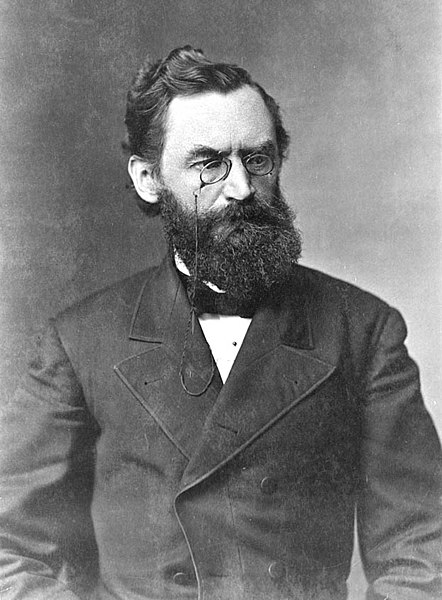Carl Schurz was a German revolutionary and an American statesman, journalist, and reformer. He migrated to the United States after the German revolutions of 1848–1849 and became a prominent member of the new Republican Party. After serving as a Union general in the American Civil War, he helped found the short-lived Liberal Republican Party and became a prominent advocate of civil service reform. Schurz represented Missouri in the United States Senate and was the 13th United States Secretary of the Interior.
Schurz photographed by Mathew Brady, c. 1877
Carl Schurz as a young man
Carl Schurz, [c. 1859–1870]. Carte de Visite Collection, Boston Public Library.
"For freedom in Germany and America": West German commemorative stamp featuring Schurz for the United States Bicentennial, 1976
German revolutions of 1848–1849
The German revolutions of 1848–1849, the opening phase of which was also called the March Revolution, were initially part of the Revolutions of 1848 that broke out in many European countries. They were a series of loosely coordinated protests and rebellions in the states of the German Confederation, including the Austrian Empire. The revolutions, which stressed pan-Germanism, demonstrated popular discontent with the traditional, largely autocratic political structure of the thirty-nine independent states of the Confederation that inherited the German territory of the former Holy Roman Empire after its dismantlement as a result of the Napoleonic Wars. This process began in the mid-1840s.
Origin of the Flag of Germany: Cheering revolutionaries in Berlin, on 19 March 1848
The painting Germania, possibly by Philipp Veit, hung inside the Frankfurt parliament, the first national parliament in German history
Vienna Uprising, October 1848
The Battle of Kirchheimbolanden, 14 June 1849



![Carl Schurz, [c. 1859–1870]. Carte de Visite Collection, Boston Public Library.](https://upload.wikimedia.org/wikipedia/commons/thumb/f/fb/Carl_Schurz_-_DPLA_-_36c27a586a55f8910cd43bf2be7f08a7_%28page_1%29.jpg/364px-Carl_Schurz_-_DPLA_-_36c27a586a55f8910cd43bf2be7f08a7_%28page_1%29.jpg)




